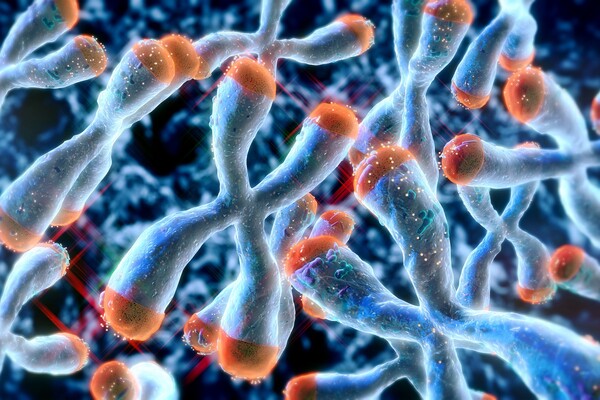
Image: fcafotodigital via Getty Images
PHILADELPHIA -- We may take it for granted that humans can classify each other according to familial or social status, but how did those abilities evolve? In the Nov. 14 issue of the journal Science, researchers at the University of Pennsylvania report that, much like humans, baboons identify each other based on complex rules that determine relationships between families and status or "rank" within their particular family.
"Humans organize their knowledge of social relationships into a hierarchical structure, and they also make use of hierarchical structures when deducing relationships between words in language," said Robert Seyfarth, a professor in Penn Department of Psychology of the School of Arts and Sciences and one of the study authors. "The existence of such complex social classifications in baboons, a species without language, suggests that the social pressures imposed by life in complex groups may have been one factor leading to the evolution of sophisticated cognition and language in our pre-human ancestors."
For the last 12 years, Seyfarth, Dorothy Cheney, a professor in Penn Department of Biology, and their colleagues have studied a troop of more than 80 baboons in the Okavango Delta of Botswana. Their research explores the cognitive mechanisms that might be the basis of primate social relationships and how such relationships may have influenced the development of human social relationships, intelligence and language.
During the 12 years, the researchers have become familiar with the social organization of the baboon troop and documented the existence of stable, long-term familial hierarchies within the troop. Baboon groups contain a number of adult females arranged in a linear dominance rank order. Each female offspring acquire ranks immediately below those of their mother, with the youngest offspring holding higher ranks than their older siblings. The result is a social structure based simultaneously on rank and matrilineal kinship at least that is how it looks from the perspective of a human observer.
"We have watched the extended drama of baboon interactions and have a detailed understanding of the hierarchy of their relationships," Seyfarth said. "But this could be just idle anthropomorphism. The big question is whether the baboons themselves have an equally sophisticated view of their society."
Dominant baboons make threatening grunts, which lower ranked baboons answer with supplicating screams. The researchers tape-recorded the calls of known individuals, then used a computer to mix and match the grunts and screams to make it seem as if a lower-ranked baboon was effectively dominating a higher ranked baboon. Then, in a playback experiment, the researchers played recorded interactions to individual baboons to see if there would be a response. Some playbacks mimicked the existing hierarchy, whereas others mimicked a rank-reversal, either between two members of the same family or between two members of different families.
"Rank-reversals run counter to their expectations, and a baboon will momentarily pause and give a look, just as you might if you didn quite believe what you had just heard," said Thore Bergman, lead author on the paper. "Our results demonstrated that these relationships were real and relevant to these baboons."
By analyzing video of the baboons' responses to various rank-reversals, Seyfarth, Cheney and their post-doctoral colleagues Bergman and Jacinta Beehner found that baboons respond more strongly to recordings mimicking rank-reversals between families than within families.
"Rank reversals within families are surprising, but rank-reversals between families are of potentially much greater importance and we see that the baboons recognize the significance of these events," Seyfarth said. "To do so, they must be astute observers, watching animals interact and deducing a social structure on the basis of what they've seen."
Funding for this research is provided by the National Institutes of Health, the Leakey Foundation and the University Research Foundation of the University of Pennsylvania.
NOTE TO EDITORS AND REPORTERS: High-resolution photographs of the Okavanga Delta baboons are available via the links below.
Greg Lester

Image: fcafotodigital via Getty Images

nocred

Mia Levine and Michael Lampson’s research examines how telomere length is inherited, and how this can inform future genetic research in how cancer develops.
(Image: Courtesy of Getty/nopparit)

Image: Mininyx Doodle via Getty Images